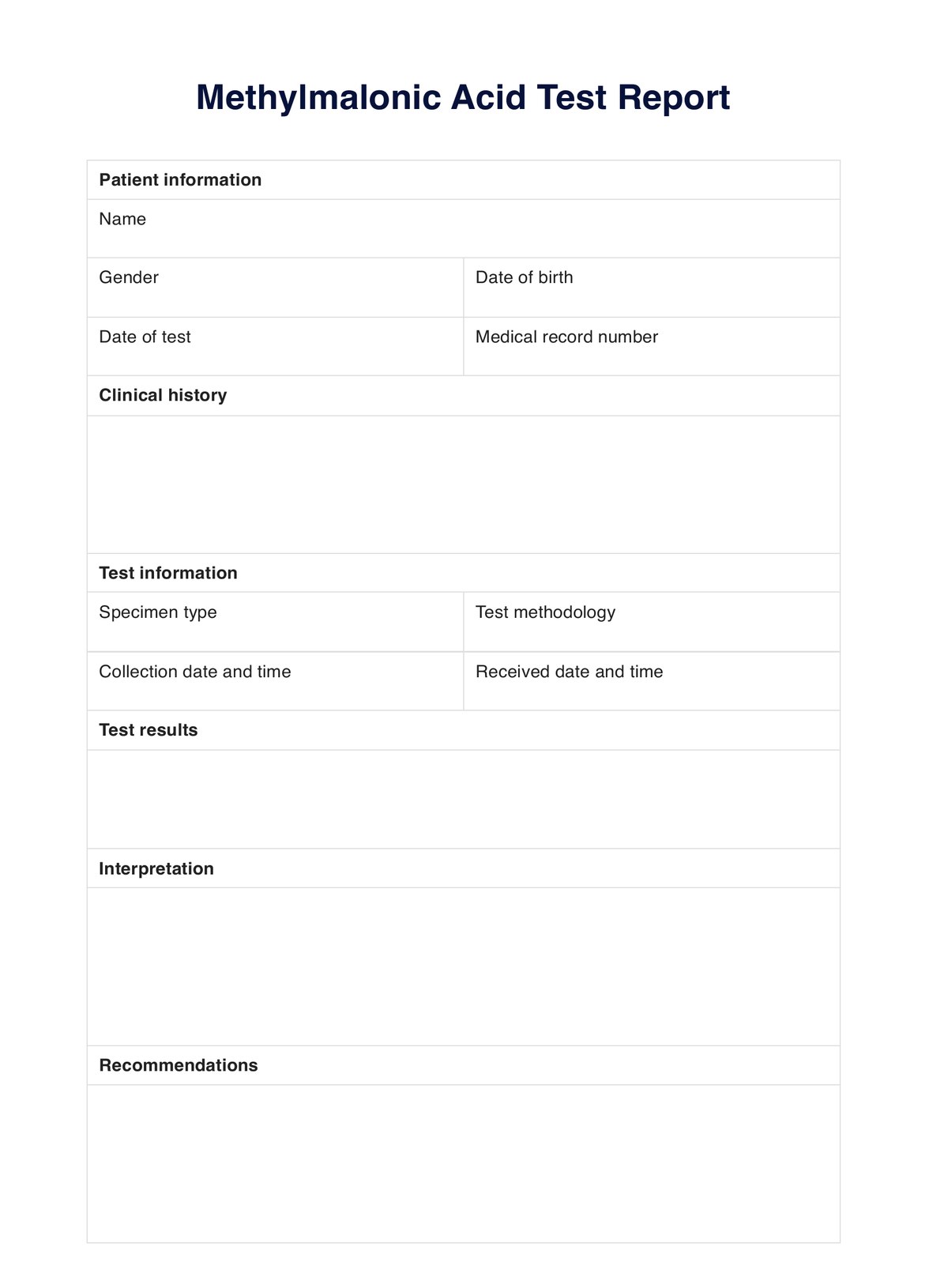Primary care physicians, hematologists, and other healthcare providers often order Methylmalonic Acid Tests to diagnose or monitor vitamin B12 deficiency and certain metabolic disorders. Patients with symptoms suggestive of these conditions may also request the test.

Methylmalonic Acid Test Reports
Download a free Methylmalonic Acid Test Report template to easily document your patient's results. Get the PDF template and example now.
Methylmalonic Acid Test Reports Template
Commonly asked questions
Methylmalonic Acid Tests are used to diagnose and monitor conditions associated with elevated methylmalonic acid levels, such as vitamin B12 deficiency. They may be ordered when a patient presents with symptoms like anemia, fatigue, or neuropathy or when other tests indicate a potential issue with vitamin B12 metabolism.
A Methylmalonic Acid Test typically takes a few minutes to complete. A healthcare professional will draw a small blood sample, often from a vein in the arm, and send it to a laboratory for analysis. Results are usually available within a few days.
EHR and practice management software
Get started for free
*No credit card required
Free
$0/usd
Unlimited clients
Telehealth
1GB of storage
Client portal text
Automated billing and online payments











